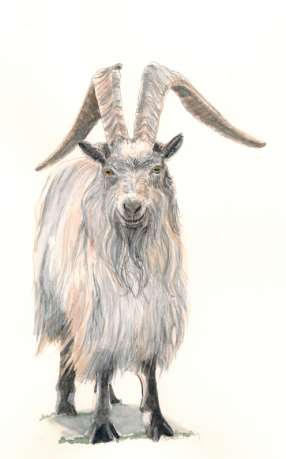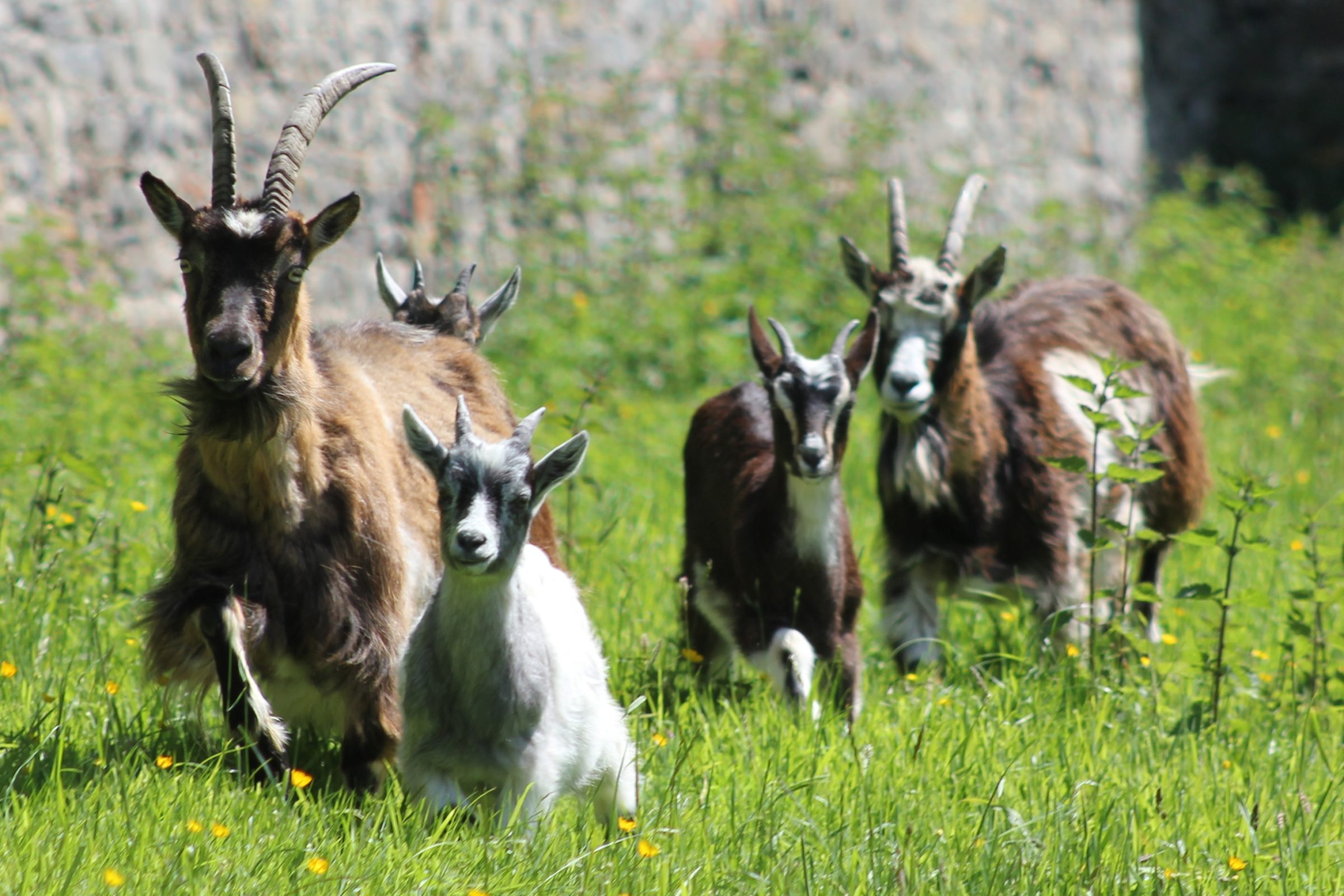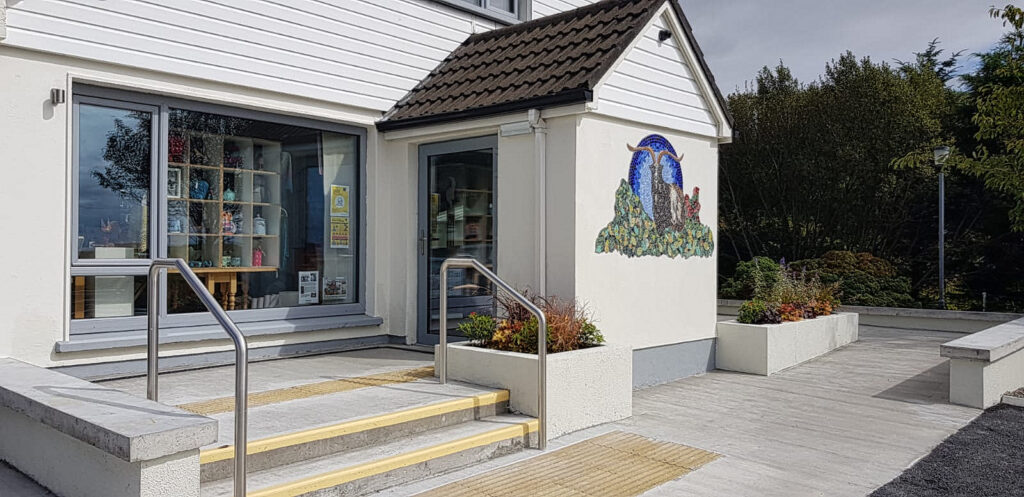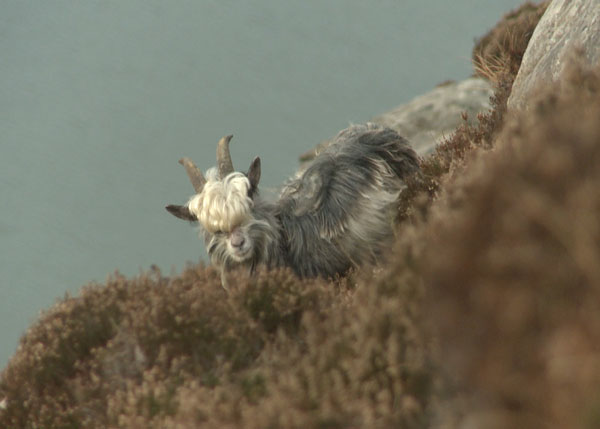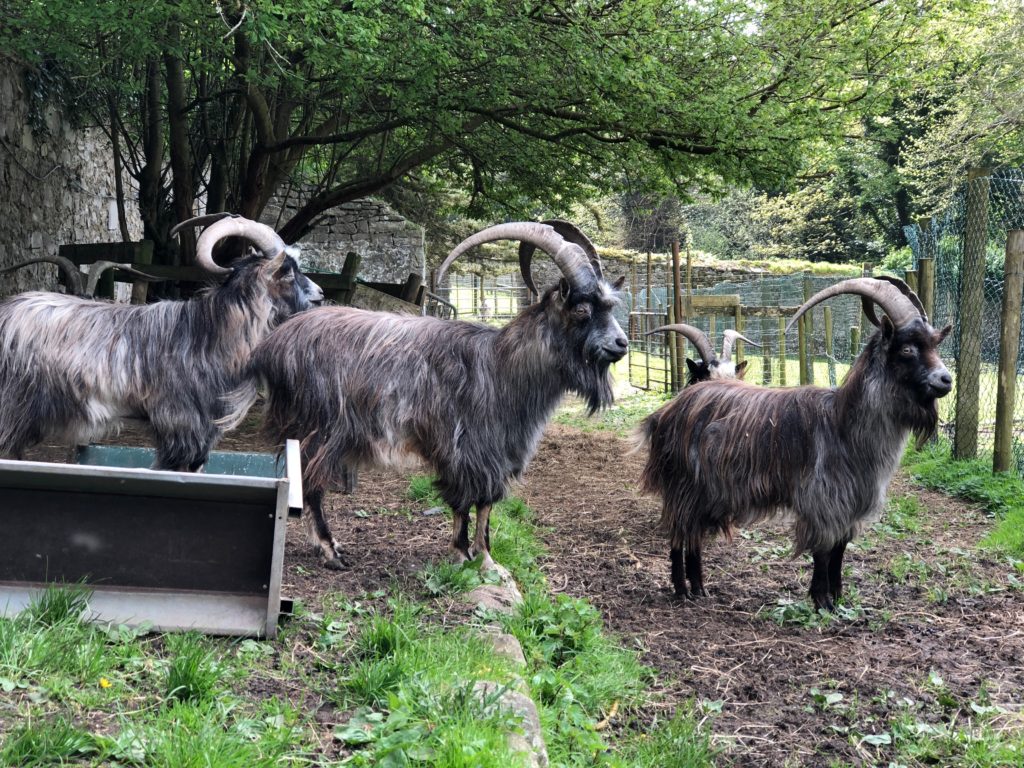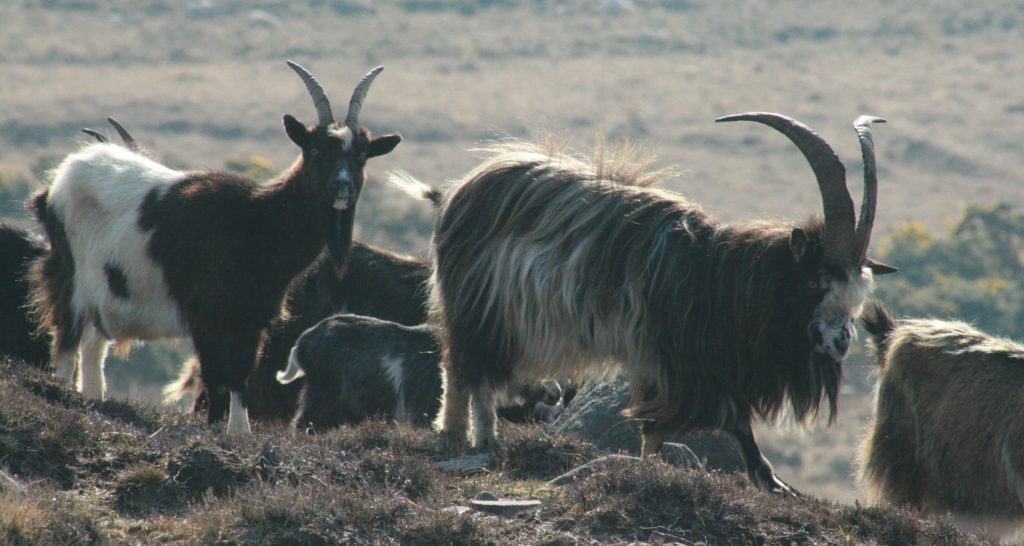What is an Old Irish Goat
The Old Irish Goat is Ireland’s indigenous landrace breed, now critically endangered and only found in remote mountain ranges roaming in feral herds. Interbreeding with imported domestic goats has caused major loss of the original the characteristics and adaptations.
The Old Irish Goat is highly adapted to the Irish landscape and climate. The males in particular are impressive animals, featuring – long hair, coiffs, beards and sideburns, and impressive horns. The females have a more delicate frame and a matriarchal role with their lineage being the social thread of the herd. Collectively these attributes make them a fascinating part of Ireland’s natural heritage.
After arriving in Ireland during the Neolithic age, about 5,000 years ago, they adapted naturally to the Irish landscape over time. They move differently to modern (improved) goat breeds due to their height to leg length which has resulted in a small stocky goat with short legs and a long body. Its ears are small and worn in a pricked position and its impressive horns are large, corrugated, and bend over the shoulders in individual ways. These goats have no tassels and are always bearded. The male beard blends into the long-haired coat which is rough and thick and hangs down to the belly line. Being cold weather goats, they have an underwool of cashmere. They have 12 different colour patterns which give rise to the description ‘coats of many colours’.
